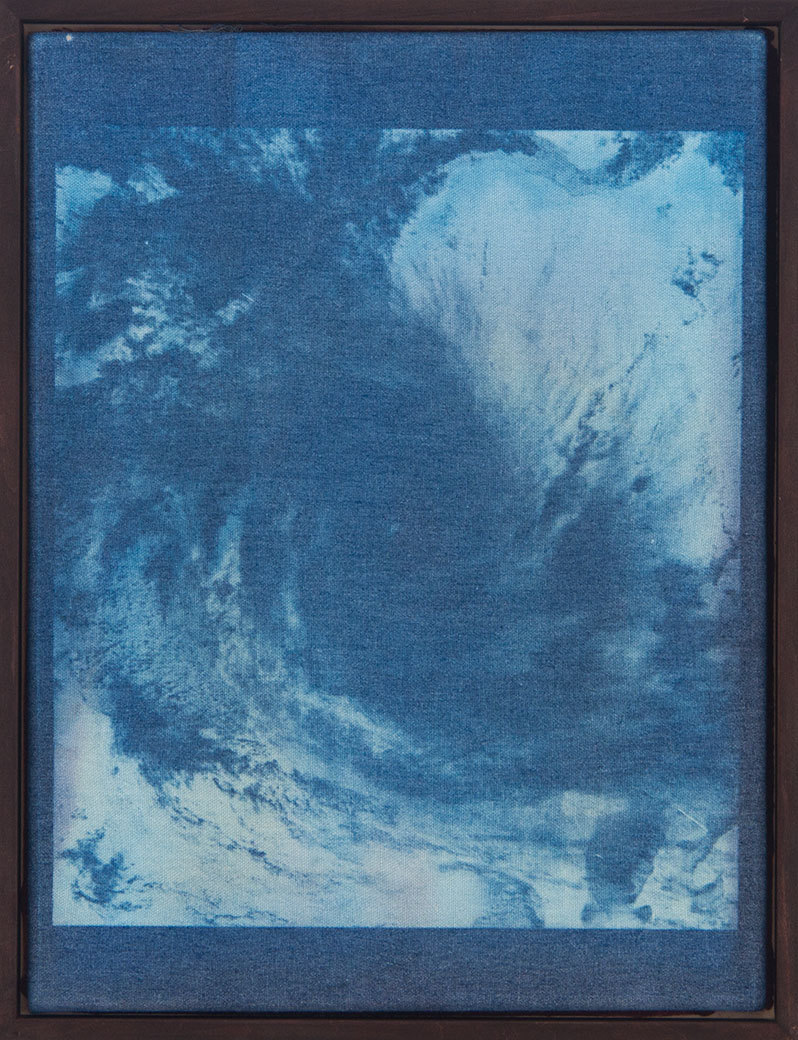
Kerndruck (Mitch), 2019
Cyanotype on canvas
(optional frame)
44 x 34 cm (17.3 x 13.4 inches)
Series of 15 unique works + 2 AP
900 Euro
Includes 13% VAT. Please contact us for shipping options, and for pricing in other currencies.

Kerndruck (Mitch), 2019
Cyanotype on canvas
(optional frame)
44 x 34 cm (17.3 x 13.4 inches)
Series of 15 unique works + 2 AP
900 Euro
Includes 13% VAT. Please contact us for shipping options, and for pricing in other currencies.
Andreas Duscha's series Kerndruck deals with the phenomenon of hurricanes and specifically with the eye of the storm. The eye of the storm is the area of a tropical cyclone that is almost windless and thus represents a moment of pausing in the swirling masses. Each hurricane has a very characteristic appearance, which makes it, similar to a fingerprint, unique. This is also reflected in the fact that storms have been personified by being given names.
The first eponym was the Australian meteorologist Clement Wragge at the end of the 19th century. What began harmlessly with women's names became bitterly serious: the new government took on the wrath of the meteorologist when it did not approve a state weather service with him as director. From then on, unpopular politicians raged through the country as vicious metaphors. To no avail for Wragge: his weather station was soon closed. The naming of storms was not taken over by his colleagues.
In America, the writer George Steward was inspired by Wragge 40 years later: The protagonist of his novella "Storm", a young meteorologist from San Francisco, named Pacific storms after ex-girlfriends. The worst of them was Maria - she made a name for herself in the country so quickly that various weather services soon followed the idea. Since this caused confusion, the American weather service created a uniform alphabetical name in 1953. On the Atlantic and Pacific, wild women were now mad.
Previously defined lists of names with 21 names each where used from thereon to name the storms. The number 21 was set because the most active Atlantic hurricane season in 1933, with 21 registered tropical cyclones, had the highest activity to date. Since 1979, male and female names were used alternately for the first time, until then only female names had been used. It is fascinating to consider why a storm personified in this way should be Maria or Matthew.
For his edition consisting of 15 unique pieces, Andreas Duscha uses photographs of hurricanes of the last thirty years. The photographs were exposed using the photographic technique of cyanotype, also known as iron blue printing, on a canvas previously photosensitized with a chemical solution.

Kerndruck (Mitch), 2019
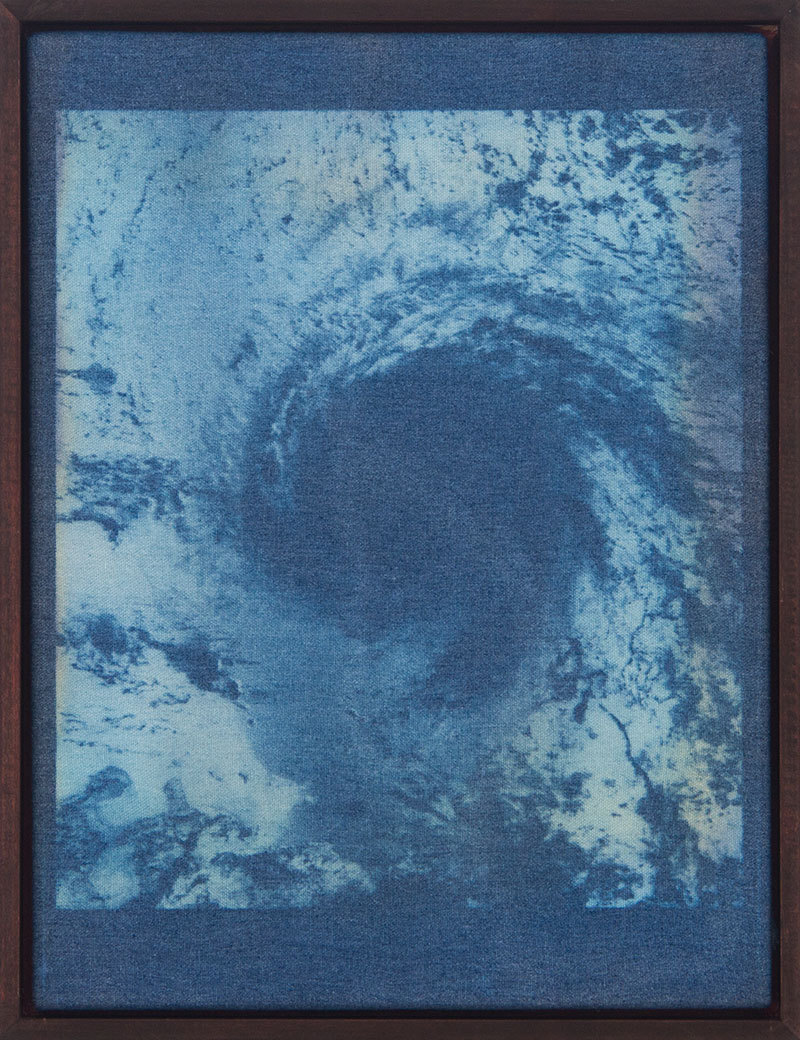
Kerndruck (Irma), 2019
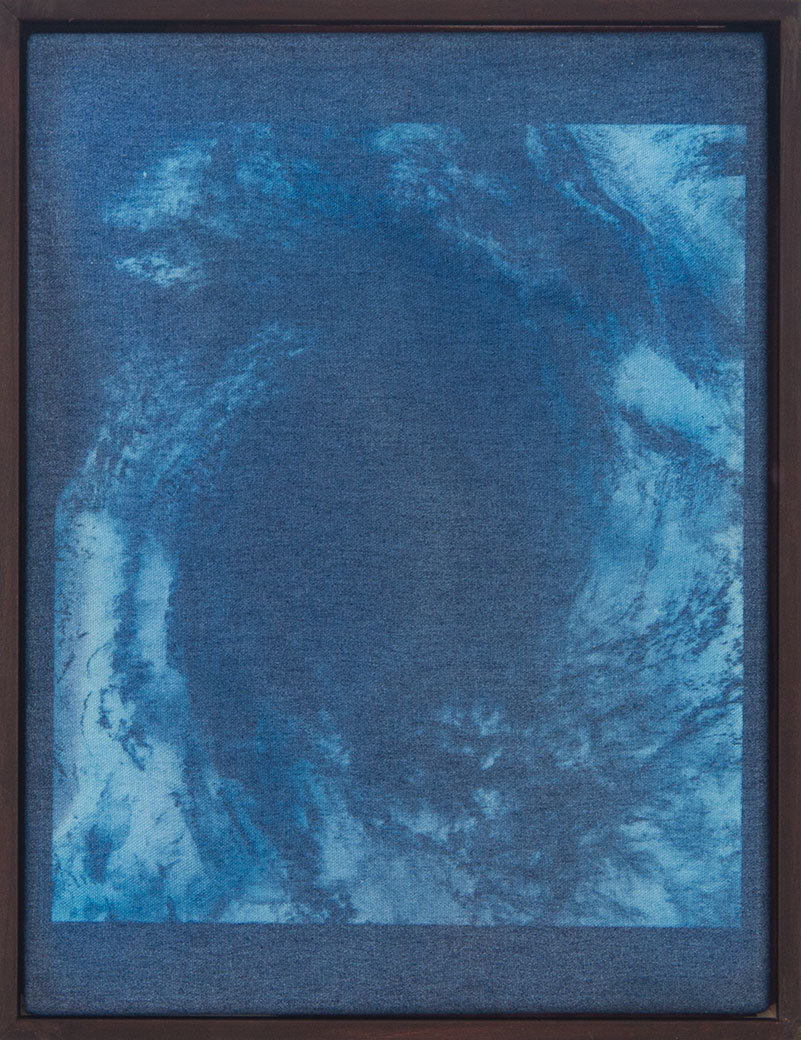
Kerndruck (Michael), 2019
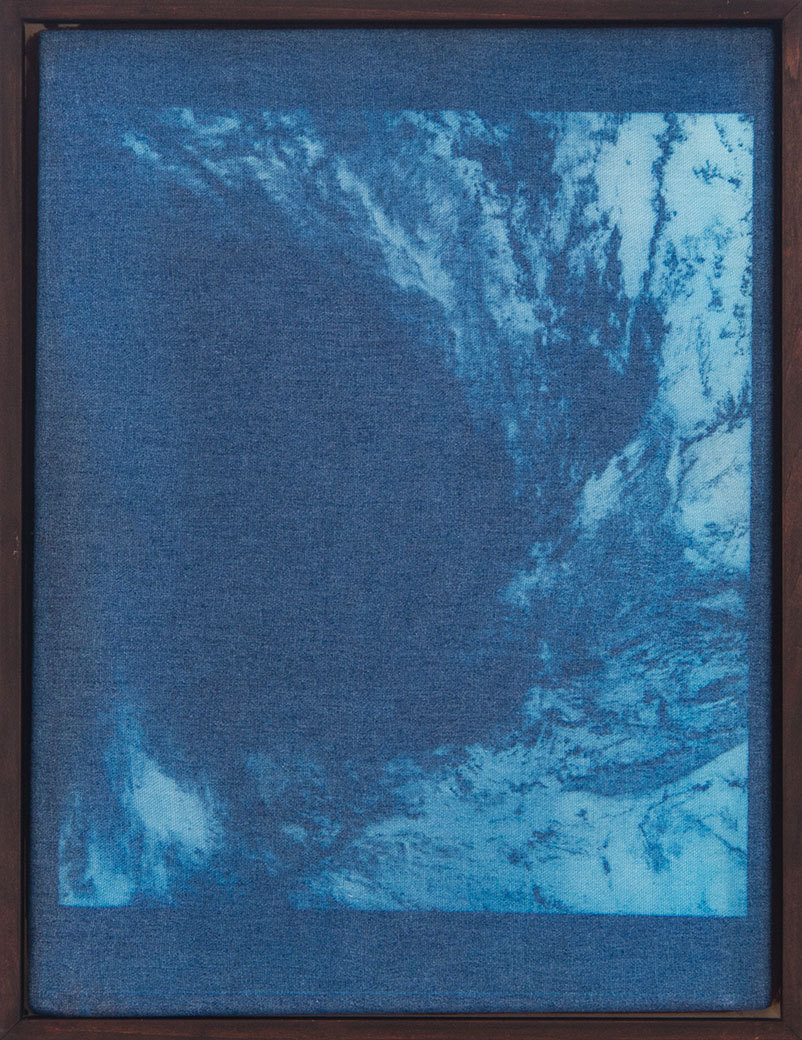
Kerndruck (Wilma), 2019
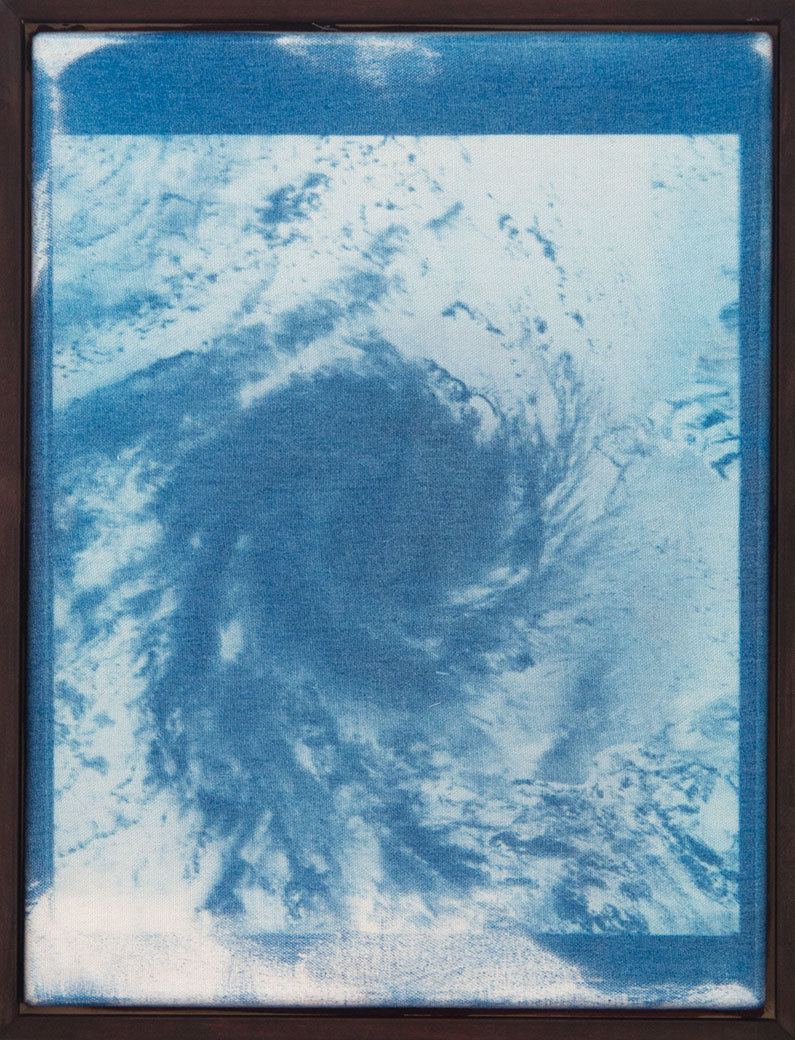
Kerndruck (Maria), 2019
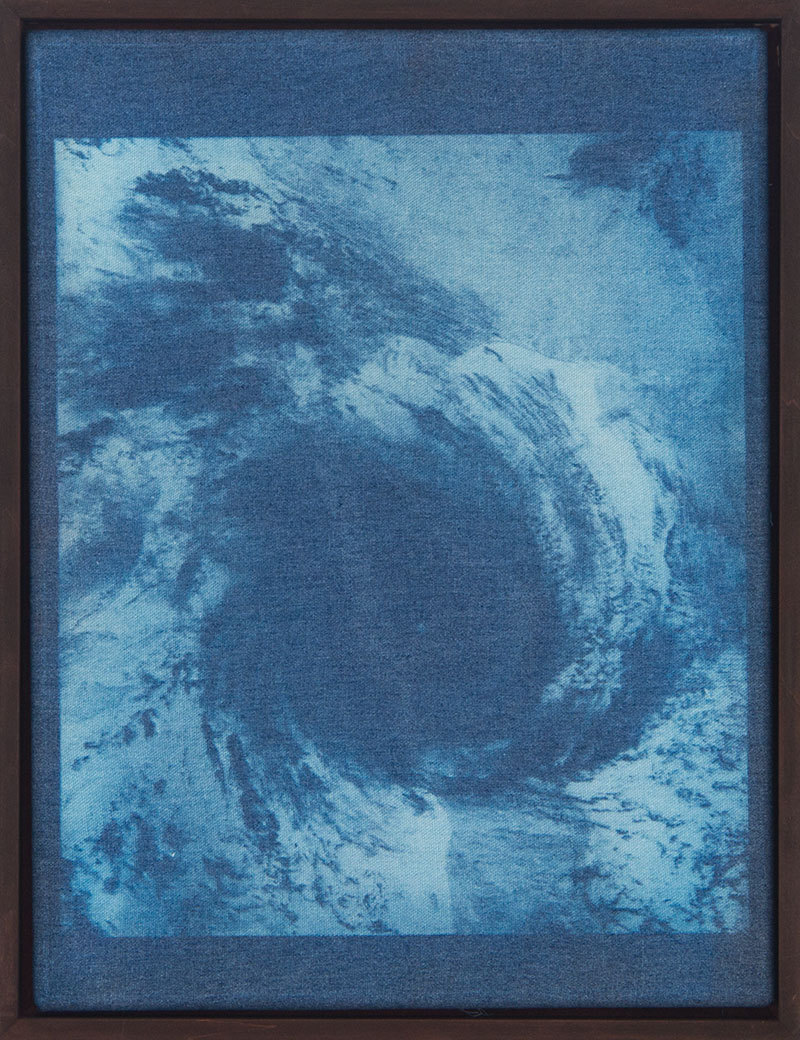
Kerndruck (Rita), 2019
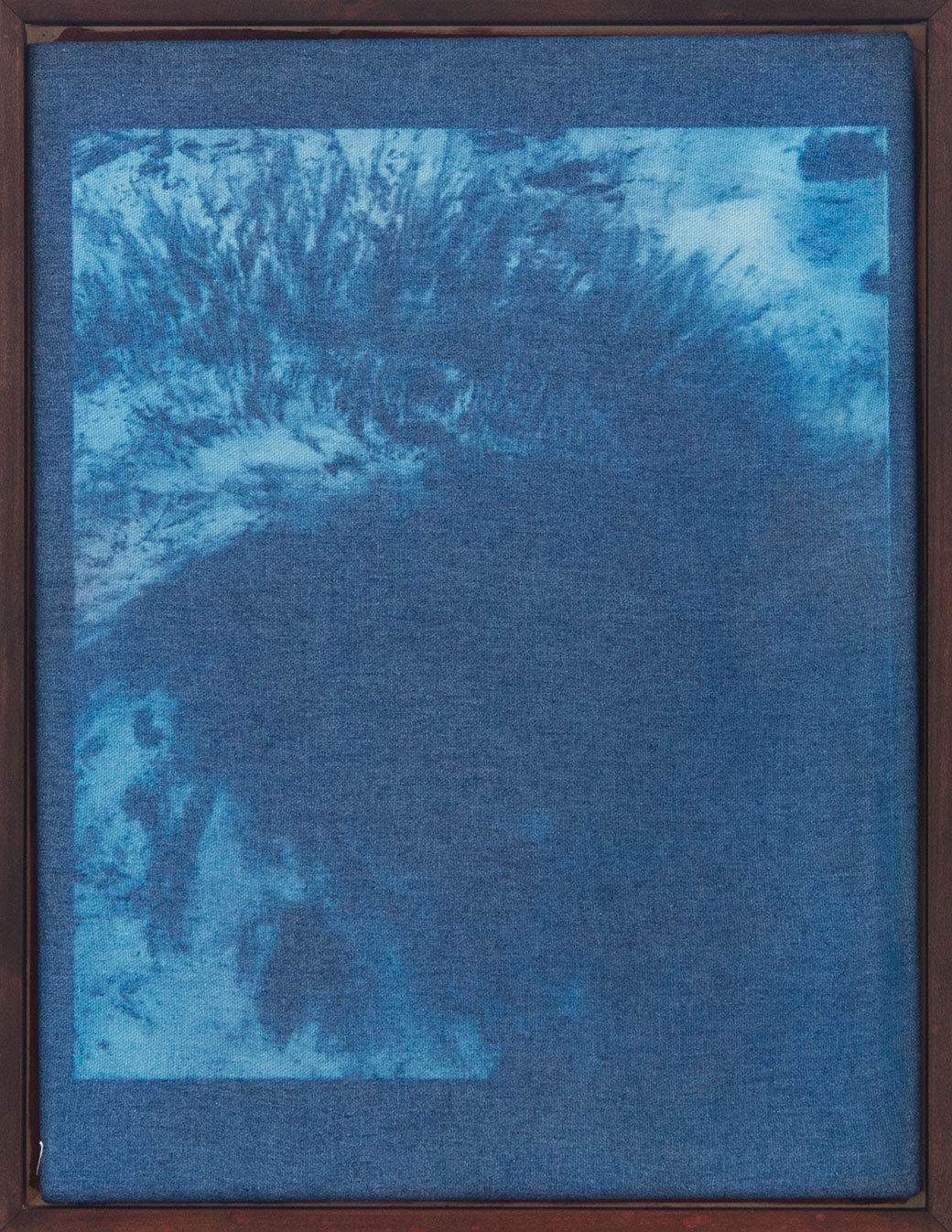
Kerndruck (Matthew), 2019
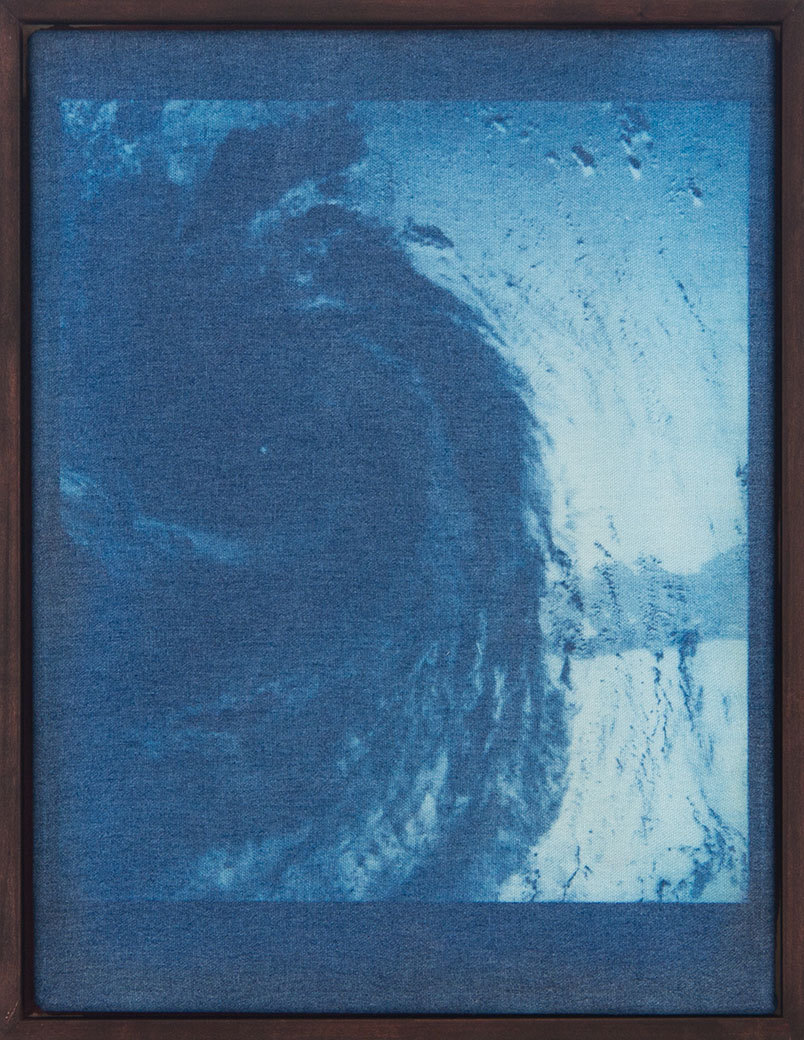
Kerndruck (Gilbert), 2019
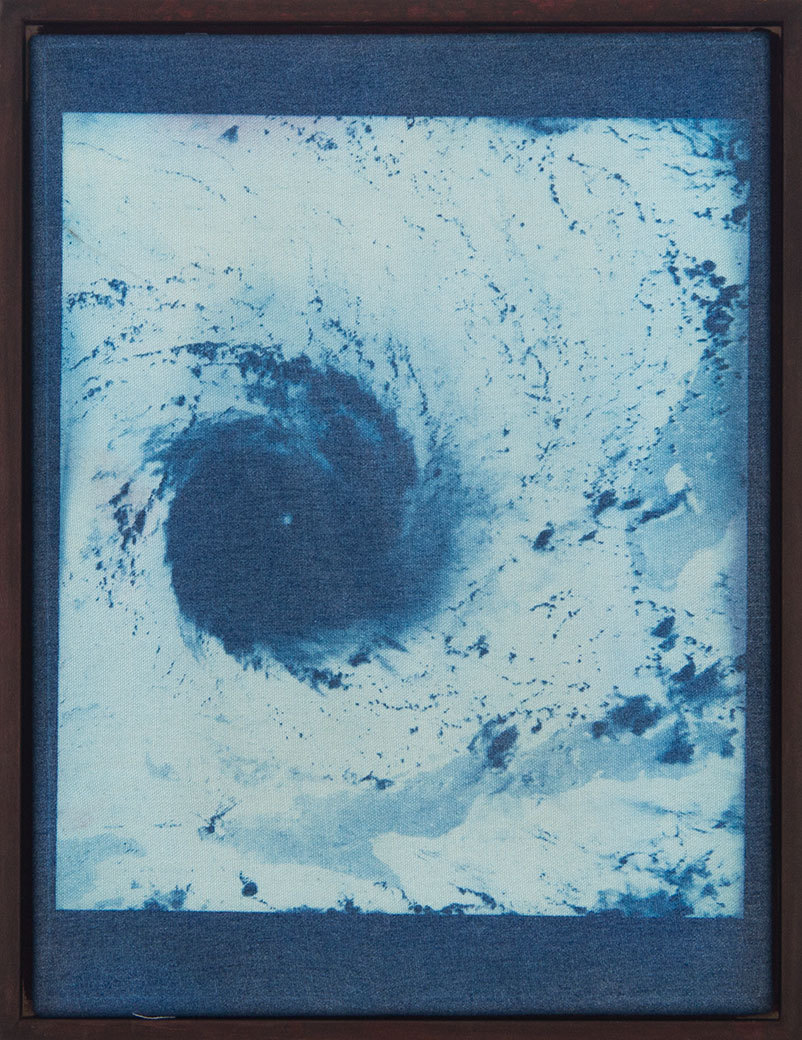
Kerndruck (Andrew), 2019
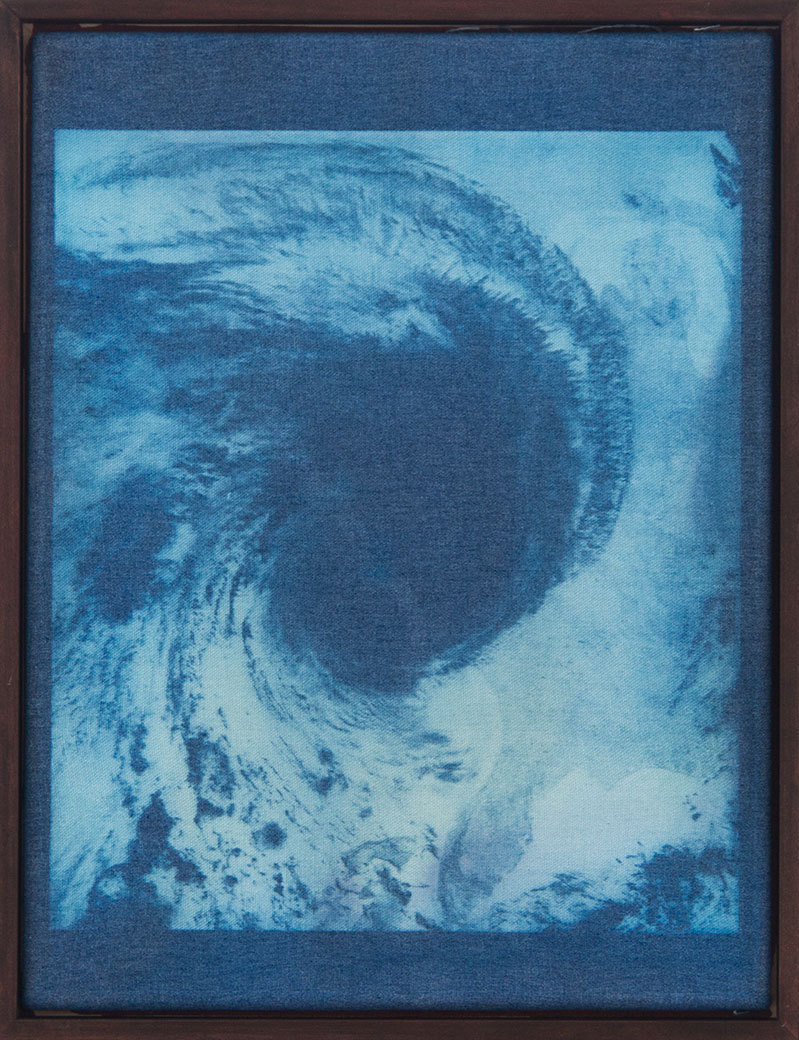
Kerndruck (Isabel), 2019
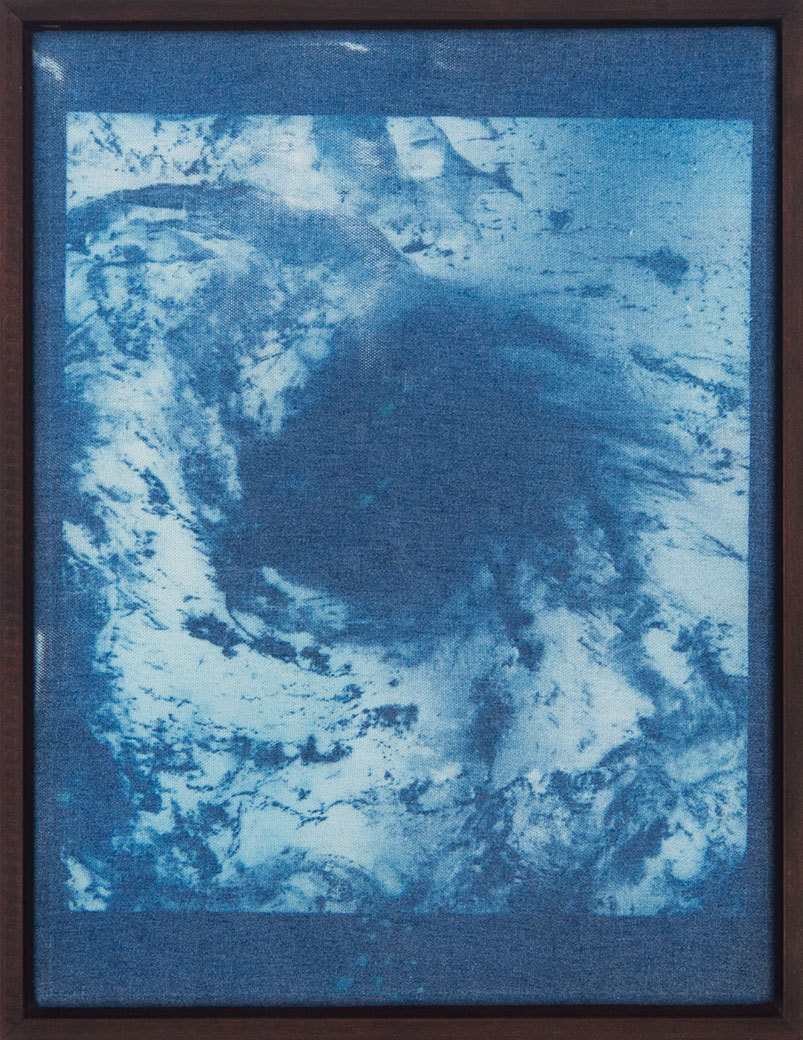
Kerndruck (Emily), 2019
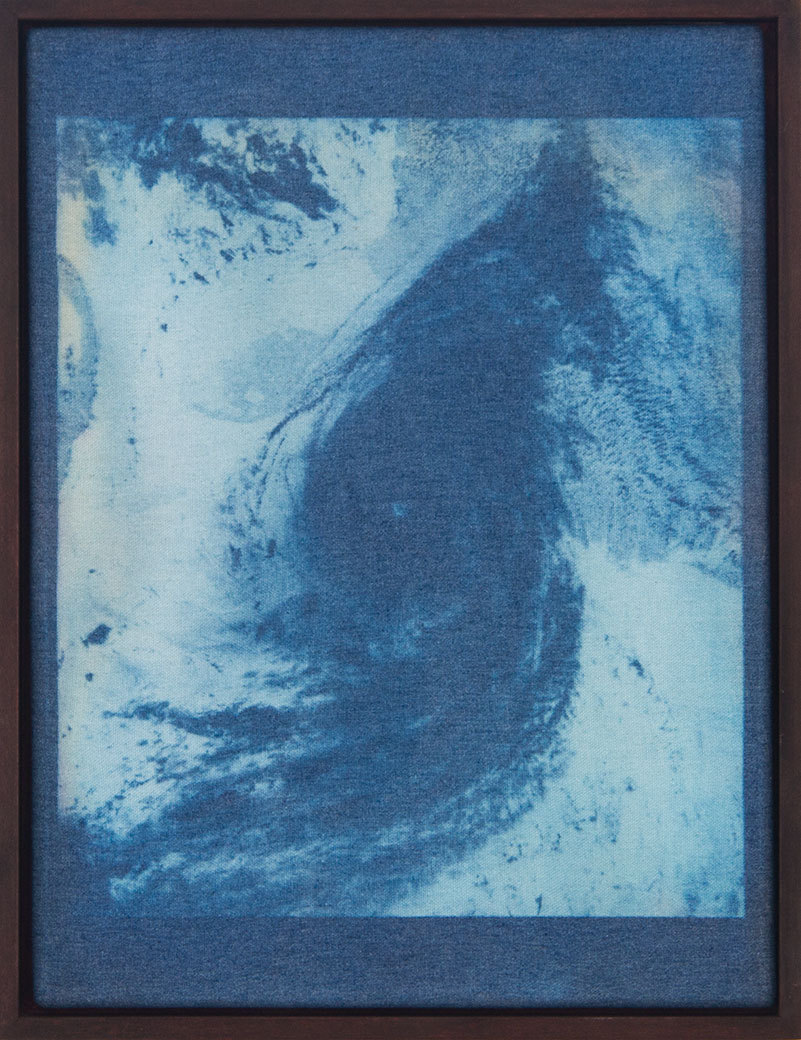
Kerndruck (Hugo), 2019
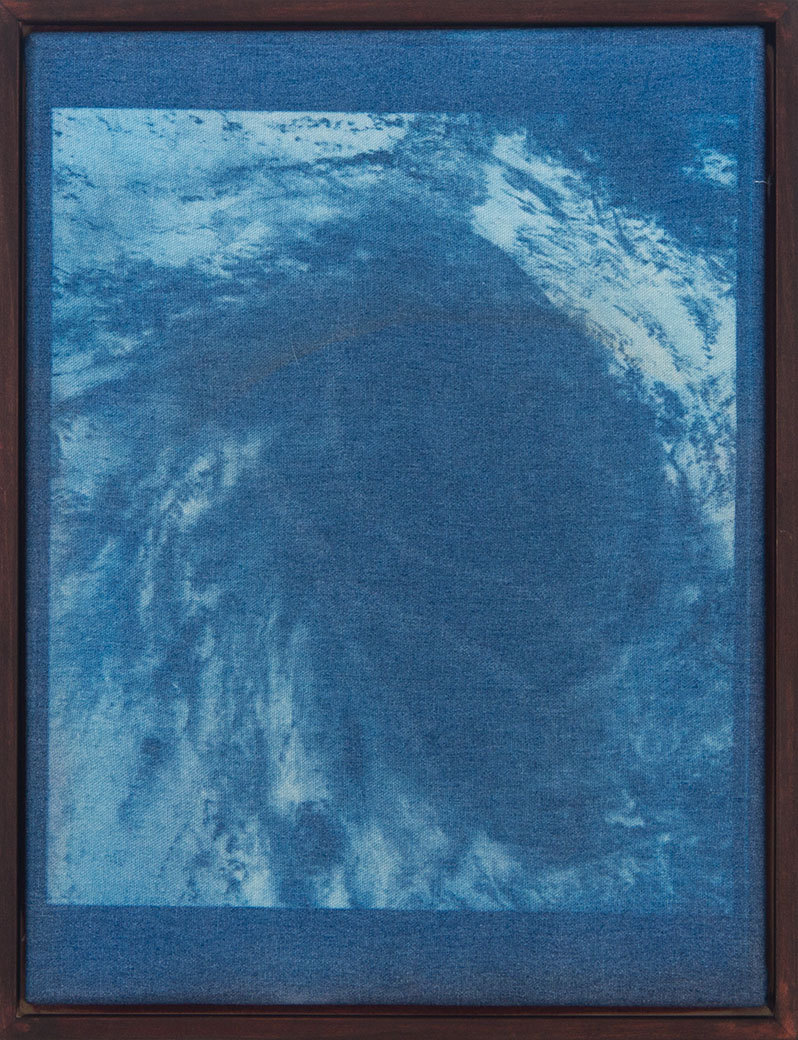
Kerndruck (Ivan), 2019
Andreas Duscha (*1976 in Heidenheim an der Brenz, Germany), who frequently bases his works on found digital images, that are often associated with specific places, historical events and political phenomena, aims to appropriate the facticity of an assertion. He builds his works on the potential, possibility and imagination, filtering episodes of events that could have happened in a particular way. Duscha does not try to prove, evaluate or bear witness. Moreover, he deciphers, modifies, encodes and stages, according to his own parameters, injecting subjectivity and singularity into the seemingly known, obvious and banal.
Read our story with Andreas in his studio.
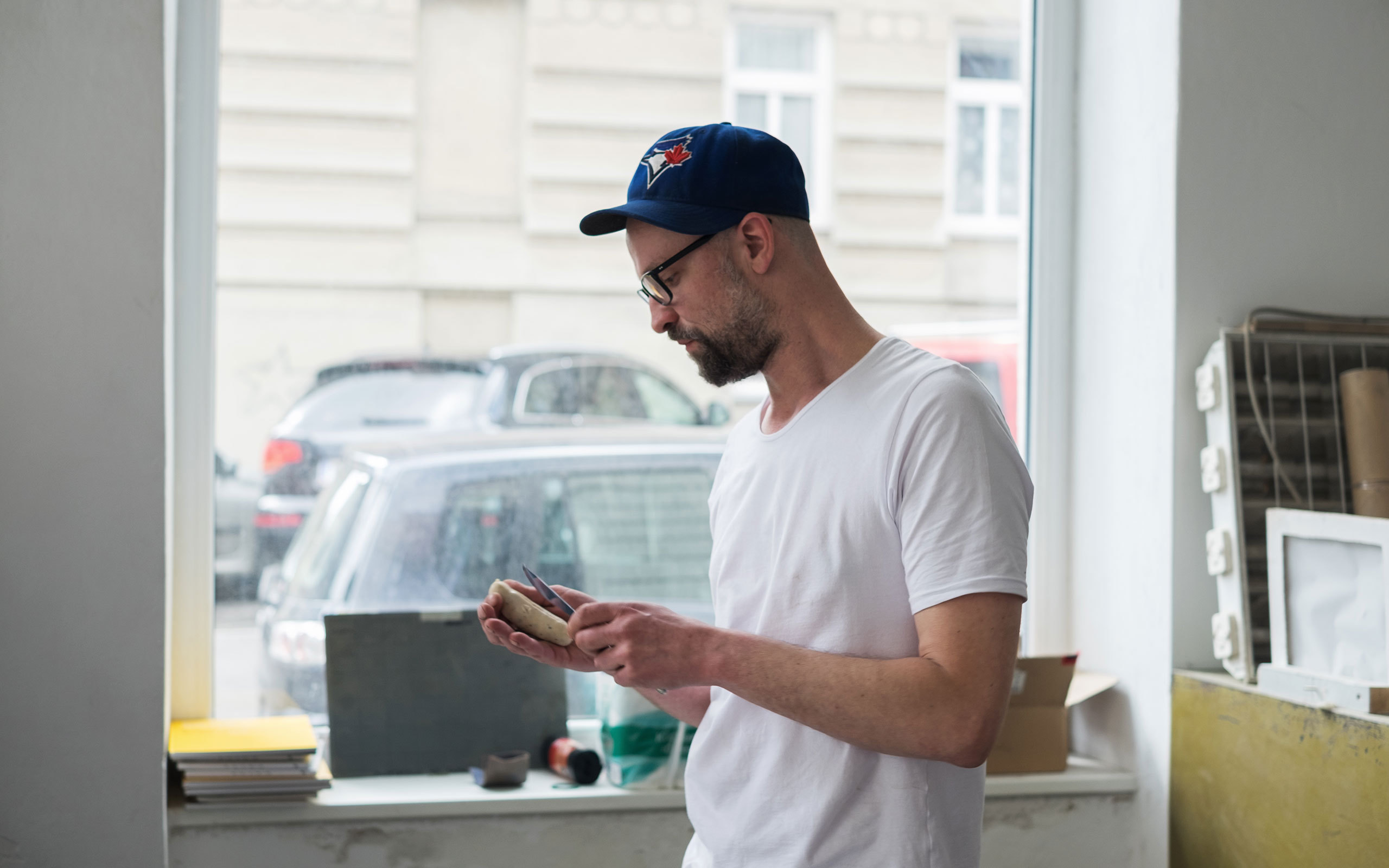
Links: